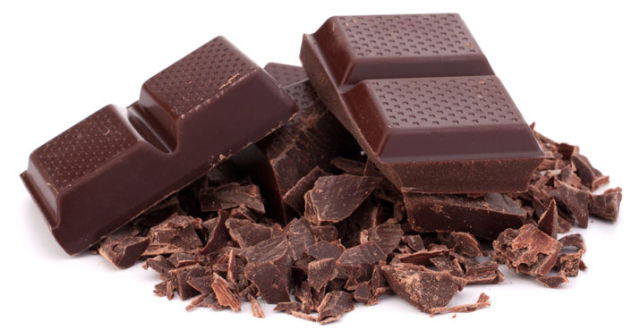
Because of its popularity, a great deal of research has been devoted to understanding the impact of chocolate on our health and well-being. There are several positive effects of chocolate. Cocoa has been found to be a rich source of antioxidants, and certain types of chocolate (eaten in moderation) reduce blood pressure and positively affect the circulatory system.
Sadly, most chocolates on the market today are also rather unhealthy due to their extremely high fat content. Rising obesity rates worldwide make it hard to recommend chocolate as a health food. Reducing the fat levels in chocolate would help address this concern.
Unfortunately, no adequate solution has ever been found. In a new study recently published in Proceedings of the National Academy of Sciences, researchers investigated the basic science behind liquid chocolate suspensions that makes it so difficult to get rid of the fat.
The science behind chocolate
Though chocolate is typically sold in a solid form, it exists in a liquid form throughout the majority of the manufacturing process. Liquid chocolate consists of solid particles of cocoa, sugar, milk solids, and more suspended in melted fat and oils (primarily cocoa butter).
From a physical standpoint, all liquid suspensions are constrained by two important quantities, both of which are dependent on the particle shape. The first quantity is the maximally random jammed (MRJ) density, which describes the highest three-dimensional packing density that can be achieved by a particle in the suspension. The second quantity is the particle’s intrinsic viscosity, which is a measure of how the particle itself contributes to the viscosity of the liquid suspension. For a spherical particle, the MRJ density is approximately 64 percent, while the intrinsic viscosity is 2.5.
Through visual analysis, the scientists confirmed that the cocoa solids were spherical, roughly 2µm in diameter. If chocolate simply consisted of cocoa and fats, the suspended coca particles could take up no more than 64 percent of the space, meaning that the liquid fat phase must be a minimum of 36 percent of the suspension. If less fat were present, the cocoa particles would be jammed, and the flow of the material would stop during production.
In all reality, the density of the particles in a chocolate suspension is probably slightly below the MRJ density due to the presence of other particulate components. This means that a small amount of liquid fats could probably be removed, but that would result in a sharp increase in the viscosity of liquid chocolate as it approaches the MRJ density.
Therefore, in order to reduce the fat level in chocolate, we also need to reduce the viscosity of liquid chocolate despite the high solid loadings. We'd also need to increase the MRJ density.
Zap the chocolate
The scientists developed a method to alter the particle size and shape, resulting in changes in the chocolate suspension viscosity. Application of an electric field in the direction of the liquid chocolate's flow results in aggregation of the particles into short chains along the flow direction. This change in microstructure disrupts the rotational symmetry of the particles, increases the MRJ density, and ultimately reduces the viscosity in the flow direction.
The team performed calculations to determine the theoretical reduction in viscosity. When the method is optimized to yield a uniform suspension of particle aggregates having the same shape and size, the relative viscosity along the flow direction is reduced by more than 80 percent of the original value.
Due to the non-spherical particle shape, the viscosity differs in different directions. In the direction perpendicular to the flow, the viscosity is double what it is in the flow direction. But this difference in viscosity does not create problems; in fact, previous studies indicate it will actually help improve the overall flow by suppressing vortex formation and turbulence.
Reducing the fat content
Through calculations, the scientists determined that their new method could theoretically allow for a reduction of fat by 10-20 percent. Obviously, however, they wanted to validate their findings through experimentation.
The scientists conducted a controlled experiment where they evaluated the viscosity of a flowing chocolate suspension before and after application of an electric field. They determined that the fat level can easily be reduced by 10 percent or more without interfering with processing. They also noted that the electric current used during the process is too small to be measured with their current-reading device, which has a sensitivity of 0.1µA. This finding suggests the method is extremely energy-efficient.
The team also conducted similar tests with several chocolate samples from manufacturers including Mars, Hershey, and Blommer. Experimentation revealed that the viscosity of the chocolate suspensions can be reduced by 40-50 percent, indicating that the fat levels can also be reduced by 10 percent or more.
Most importantly, taste tests revealed that the altered chocolate still tasted good. Some testers even remarked that it may taste better than the original chocolate. We should take that with a grain of salt, though, because this research was funded by a chocolate manufacturer, Mars Chocolate. Even so, this study is an interesting example of the way public health concerns can enable development of innovative scientific solutions.
PNAS, 2016. DOI 10.1073/pnas.1605416113 (About DOIs).
reader comments
136